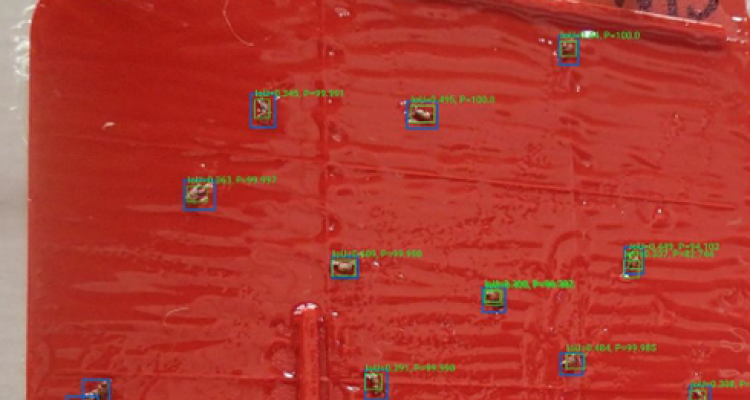
Colloquium
Object Detection for Automated Airborne Pest Monitoring of Drosophila Suzukii; The Effect of View Angle and Distance on the Accuracy of an Object Detection Model
By Daniel Lamont
Summary
Integrated pest management (IPM) is a method of crop protection that combines different strategies and practices with the goal to reduce the negative impacts of current harmful pest management strategies. A critical part of IPM is the monitoring of crops to obtain data that is needed to make management decisions. A major pest in agriculture focused on fruits is the fruit fly species the “spotted wing drosophila” (Drosophila suzukii), which damages soft-skinned fruits such as raspberries, peaches, cherries etc. Unlike other fruit fly species that use damaged or overripe fruits for reproduction, Drosophila suzukii damages fruits before the ripening stage, causing huge economic loss to farmers. Therefore, an early detection system is needed to detect Drosophila suzukii as soon as possible. One way to do this is by using a combination of unmanned aerial vehicles (UAV), Deep learning (DL) object detection models (ODM’s) and sticky traps to automatically monitor and detect the presence of these flies. The use of UAVs in such systems needs to be examined as there are many different aspects that could cause problems. In this thesis, the goal is to determine how the pose of a UAV towards the sticky-traps affects the accuracy of the ODM. Therefore, an experimental set-up was constructed where images were made of multiple traps containing Drosophila suzukii flies at different view angles and distances; 0°, 10°, 20°, 30° and 40°, and 14 cm, 24 cm and 34 cm. Furthermore, an ODM was trained to detect the flies and used to determine the effect of the mentioned variables. The accuracy of the ODM was quantified with the use of three measurement units; precision, recall and the harmonic average between the two: the F1 score. Afterwards a statistical analysis was conducted, using a combination of the Mann & Whitney U test, ANOVA-test and a polynomial linear regression. The position of 24 cm was optimal and resulted in the highest recall, precision and F1 score. The position of 14 cm resulted in a higher accuracy than 34 cm. The effect of the view angle was most pronounced at the distance of 24 cm and 34 cm and, while the negative effect of the view angle was very limited for precision, it was strong for recall. The position of 24 cm was optimal and resulted in the highest recall, precision and F1 score. However, a position of 14 cm resulted in a higher accuracy compared to a distance of 34 cm. Furthermore, the larger the view angle, the larger the negative effect on the precision, recall and F1. Additionally, the negative effect of the view angle on the accuracy was three times larger than that of the distance (within the parameters of this experiment). Thus, the results of this thesis indicate that positioning of the UAV is an important aspect to research as it has clear effects on the ability of an ODM to correctly detect objects.